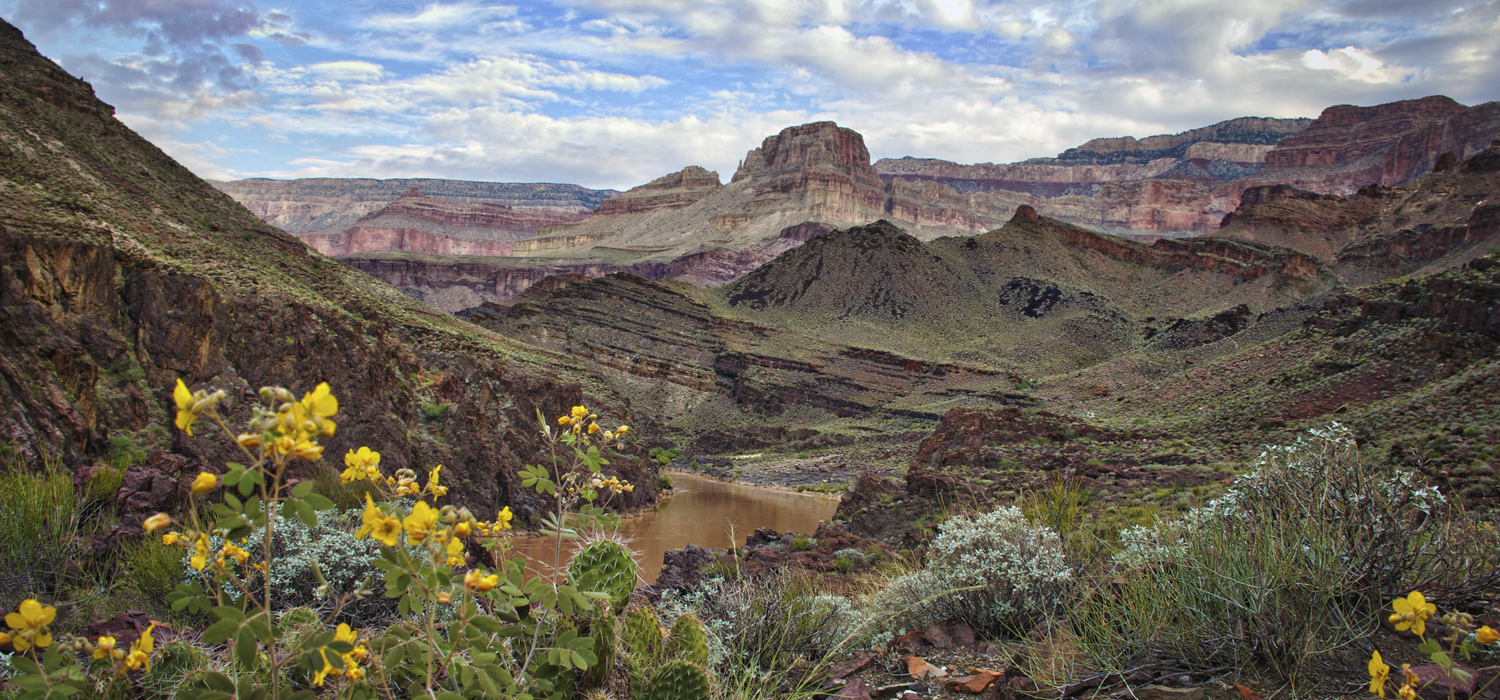
BY BERT FINGERHUT
With last year’s election and this year’s re-sorting of the political order, one thing is clear: We need strong advocates to first know, then love, then work to protect the Colorado Plateau. And, to paraphrase John Muir, if you want people to go to bat for the environment, you’ve got to get them into the wilderness.
Tens of millions of visitors have come to know and love Grand Canyon National Park. Most have seen the canyon from the rim, some have ventured a few miles down its well-trodden main corridor trails, and a smaller but luckier set has explored the wilderness of the Grand Canyon.
The National Park Service has closed many routes that once supported trips of one to almost two weeks.
Now, a draconian change in the rules for backcountry use in the Grand Canyon could well spell the end of some commercially outfitted backpacking outings in the park.
It is often dangerous to argue policy from a personal perspective, but I believe my own experience in the Grand Canyon exemplifies the experience of thousands of other Americans and sheds much-needed light on the agency’s latest proposal.
Two trips—river and trail—transformed my life.
In 1971, I went on a river trip through the park. Two years later, I went on my first backpacking trip. I was profoundly ignorant of that recreational pastime and of appropriate backcountry behavior generally. Nonetheless, I was welcomed on my first Sierra Club Grand Canyon backpacking trip into the North Bass area, a remote system of canyons on the north side of the park. Including two trip leaders and a staffer to tend the commissary and kitchen, we were a group of 16, the maximum allowed at the time. That cap dropped to 11 in the park’s 1988 backcountry management plan, where it stands today.
These trips taught me about wild places and the magic of the natural world. They taught me wilderness skills and respect for the environment. They showed me a night sky afire with stars. They also taught me a good bit about myself.
I couldn’t have navigated the canyons on my own, even after half a dozen trips. And I couldn’t have learned the necessary skills just by backpacking in a relatively tame canyon corridor. It took the rigor and the discipline of wild country—traversed under the care of skilled leaders who kept us safe—to make me a competent wilderness traveler.
Following my trips into the Grand Canyon, I began leading national Sierra Club outings in the canyon. I eventually left my job in New York City and moved west for a new career in public lands protection. In the late 1970s, I joined the Sierra Club Foundation. In the early 1980s, I joined the board of the newly formed Grand Canyon Trust and participated in hiring the organization’s first paid staffer. I also joined the board of the Southern Utah Wilderness Alliance, becoming its first out-of-state director.
There is little unique about my story. John Muir was right: every time a wilderness outing returns, it brings back a group of wilderness advocates.
And that is what is at risk here.
In its pending backcountry management plan, the National Park Service has identified a preferred alternative that would reduce the maximum group size on commercially outfitted trips to six in certain areas. It has done so with a motive of protecting the park’s sensitive resources (which I wholeheartedly support), yet fails to cite science showing that two six-person trips have less impact than one of 11 or 12, or that there has been any resource damage under the current system. I suspect the reason for that lack is very simple: there is no such science.
Every goal the National Park Service cites to support the six-person cap can be met while still allowing well-managed and monitored larger group outings to continue. Many trips could not operate with a six-person cap. Larger groups allow a greater number of future advocates to experience the beauty of the Grand Canyon. They allow multiple trip leaders to manage risks more effectively than could single leaders with smaller groups. They allow a group dynamic to grow over the course of a trip, a dynamic that, in so many cases, translates into a stronger advocacy base for conservation.
Those who have experienced these types of trips are likeliest to work to protect places such as the Grand Canyon, whether by lobbying Congress for funds, spreading the word among friends and neighbors, or grabbing a shovel for the unglamorous work of restoring trails. It’s hard to think of a less opportune time for the National Park Service to risk a steady supply of eager advocates. The best advocates for saving places are the people who know them.
To express your concern about this issue, contact Grand Canyon National Park Superintendent Chris Lehnertz.
Bert Fingerhut was a founding board member of the Grand Canyon Trust and has served in various board positions for the Trust and other public land conservation organizations.
EDITOR'S NOTE: The views expressed by Advocate contributors are solely their own and do not necessarily represent the views of the Grand Canyon Trust.

Also in this issue:
Hillary Hoffmann on the hidden wonders of the Colorado Plateau's national monuments. Read now ›